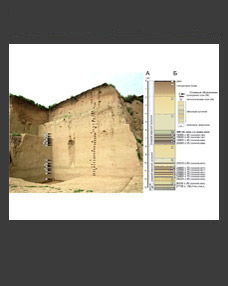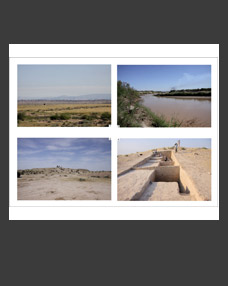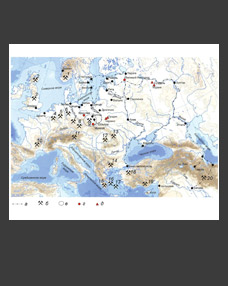Maria V. Dobrovolskaya1,*, Alexei V. Tiunov2,**, Olga A. Krylovich2,***, Evgenia A. Kuzmicheva2,****, Irina K. Reshetova1,*****, Arkady B. Savinetsky2,******, Natalia G. Svirkina1,*******, Alexei L. Smirnov1,********
1Institute of Archaeology RAS, Moscow, Russia
2Institute of Ecology and Evolution RAS, Moscow, Russia
*E-mail: mk_pa@mail.ru
**E-mail: a_tiunov@mail.ru
***E-mail: okrylovich@gmail.com
****E-mail: kuzmicheva.evgeniya@gmail.com
*****E-mail: reshetovairina@yandex.ru
******E-mail: arkadybs@rambler.ru
*******E-mail: svirkina.natalia@mail.ru
********E-mail: ari1828@bk.ru
Keywords: medieval population, forest zone of European Russia, nutritional isotopic markers.
Studying the isotopic composition of carbon and nitrogen in contemporary natural communities contributes to creating palaeoecological reconstructions of the landscape environment and food resources of the medieval rural population. The objectives of the study are to determine the isotopic composition (ratio 13С/12С and 15N/14N) of flora and fauna representatives of the modern boreal forest in European Russia, as well as a preliminary reconstruction of the nutrition and habitat of medieval residents in the studied area. Identification of the isotopic composition of nitrogen and carbon in 320 samples of flora and fauna from Peno and Andreapol districts of Tver Region allowed forming the ideas of the characteristic values of nitrogen and carbon isotopic composition in plants, the humus horizon of soil, and the collagen of bone tissue in mammals and fish. The results obtained are similar to data from adjacent regions (Baltic states, Poland, and Kirov Region of the Russian Federation), which suggests a homogeneous structure of the “isotopic landscape” in northeastern Europe. The study analyzed isotopic composition of carbon and nitrogen in the collagen of the bone tissue of individuals from the burial grounds and mounds of Tver Region and medieval Novgorod. The paper discusses issues of variability in isotopic indices depending on difference in the environment and use of food resources.
DOI: 10.31857/S086960630010944-7







